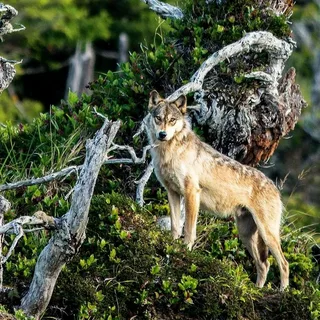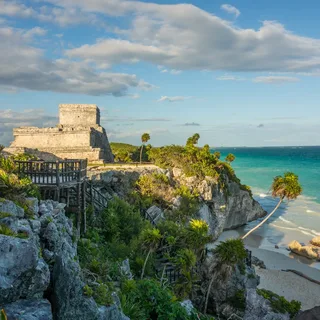British Columbian Wolves are among North America’s most fascinating and ecologically significant creatures. Known for their adaptability, intelligence, and critical role in maintaining balance within their ecosystems, these wolves thrive in the diverse landscapes of British Columbia. This article’ll explore their habitat, diet, behavior, physical characteristics, conservation status, and significance in local culture and ecology.
Also Read: Auctane Shipping
What Are British Columbian Wolves?
British Columbian Wolves, scientifically called Canis lupus columbianus, are a subspecies of the gray wolf. They are primarily found in the coastal and inland regions of British Columbia, Canada. T, ande renowned for their unique adaptations to the varregion’s ied terrains and climates ofabitat of British Columbian Wolves
Coastal Regions
British Columbian Wolves often inhabit dense rainforests and rocky shorelines in coastal areas. These wolves are unique among their species due to their semi-aquatic nature, relying heavily on marine resources.
Inland Territories
Inland wolves occupy mountainous regions, forests, and grasslands. The variety in terrain ensures access to diverse prey and shelter.
Physical Characteristics
British Columbian Wolves are striking in appearance:
- Size: Larger than many wolf subspecies, males can weigh between 80-110 pounds.
- Coat: Thick, luxurious fur ranging from light gray to black, offering excellent camouflage.
- Eyes: Piercing yellow or amber eyes contribute to their majestic aura.
Behavior and Social Structure
Pack Dynamics
British Columbian Wolves are highly social animals, living in packs of 6-12 members. Packs consist of an alpha pair, their offspring, and other related individuals. Cooperation within the pack is essential for hunting and raising pups.
Communication
These wolves communicate through:
- Howling: To signal pack members or warn rivals.
- Body Language: Expressing dominance, submission, or playfulness.
- Scent Marking: Establishing territorial boundaries.
Diet of British Columbian Wolves
British Columbian Wolves are apex predators with a diverse diet:
- Coastal Wolves: Feast on salmon, seals, and other marine life, earning them the nickname “Sea Wolves.”
- Inland Wolves: Prey on deer, elk, moose, and smaller mammals like hares and rodents.
Their adaptability to available food sources showcases their survival prowess.
Conservation Status
Threats to Survival
Despite their resilience, British Columbian Wolves face threats such as:
- Habitat Loss: Logging and urban expansion.
- Human-Wildlife Conflict: Livestock predation leading to culling.
- Climate Change: Affecting prey availability and habitat conditions.
Conservation Efforts
Efforts to protect these wolves include:
- Protected Areas: Establishing wolf sanctuaries and national parks.
- Research and Monitoring: Studying their behavior and population dynamics.
- Public Awareness: Promoting coexistence through education.
Cultural Significance
British Columbian Wolves hold a revered place in Indigenous cultures:
- Symbol of Strength: Representing resilience and teamwork.
- Spiritual Connection: Often featured in myths and art, symbolizing a balance between humans and nature.
The Role of British Columbian Wolves in Ecosystems
These wolves are vital for maintaining ecological balance:
- Population Control: Regulating prey populations to prevent overgrazing.
- Scavenger Support: Providing food for scavengers like ravens and bears.
- Vegetation Recovery: Indirectly aiding plant regrowth by controlling herbivore numbers.
Fascinating Facts About British Columbian Wolves
- Coastal wolves can swim up to 7.5 miles between islands.
- Their howls can be heard up to 10 miles away.
- They’re one of the few wolf subspecies that regularly consume marine life.
Conclusion
British Columbian Wolves are extraordinary creatures that embody the spirit of the wild. Their adaptability, intelligence, and ecological importance make them a vital part of British lumbiatoral heritage. By understanding and protecting these majestic predators, we ensure the health and balance of their ecosystems for generations to come.
Also Read: Wartenberg Wheel
FAQs About British Columbian Wolves
Q1: Are British Columbian Wolves endangered?
A: They’re not classified as endangered but face threats from habitat loss and human activity. Conservation efforts are crucial for their survival.
Q2: How are coastal wolves different from inland wolves?
A: Coastal wolves rely heavily on marine resources, while inland wolves hunt terrestrial prey like deer and elk.
Q3: Can British Columbian Wolves be found outside of British Columbia?
A: While primarily found in British Columbia, some may roam into nearby regions.
Q4: How do these wolves impact their ecosystems?
A: They play a critical role in controlling prey populations, which helps maintain ecological balance.
Q5: What’s the best way to protect British Columbian Wolves?
A: Supporting conservation programs, protecting their habitats, and promoting coexistence through education are key.






One thought on “British Columbian Wolves: Habitat, Behavior, Diet, and Conservation Insights”